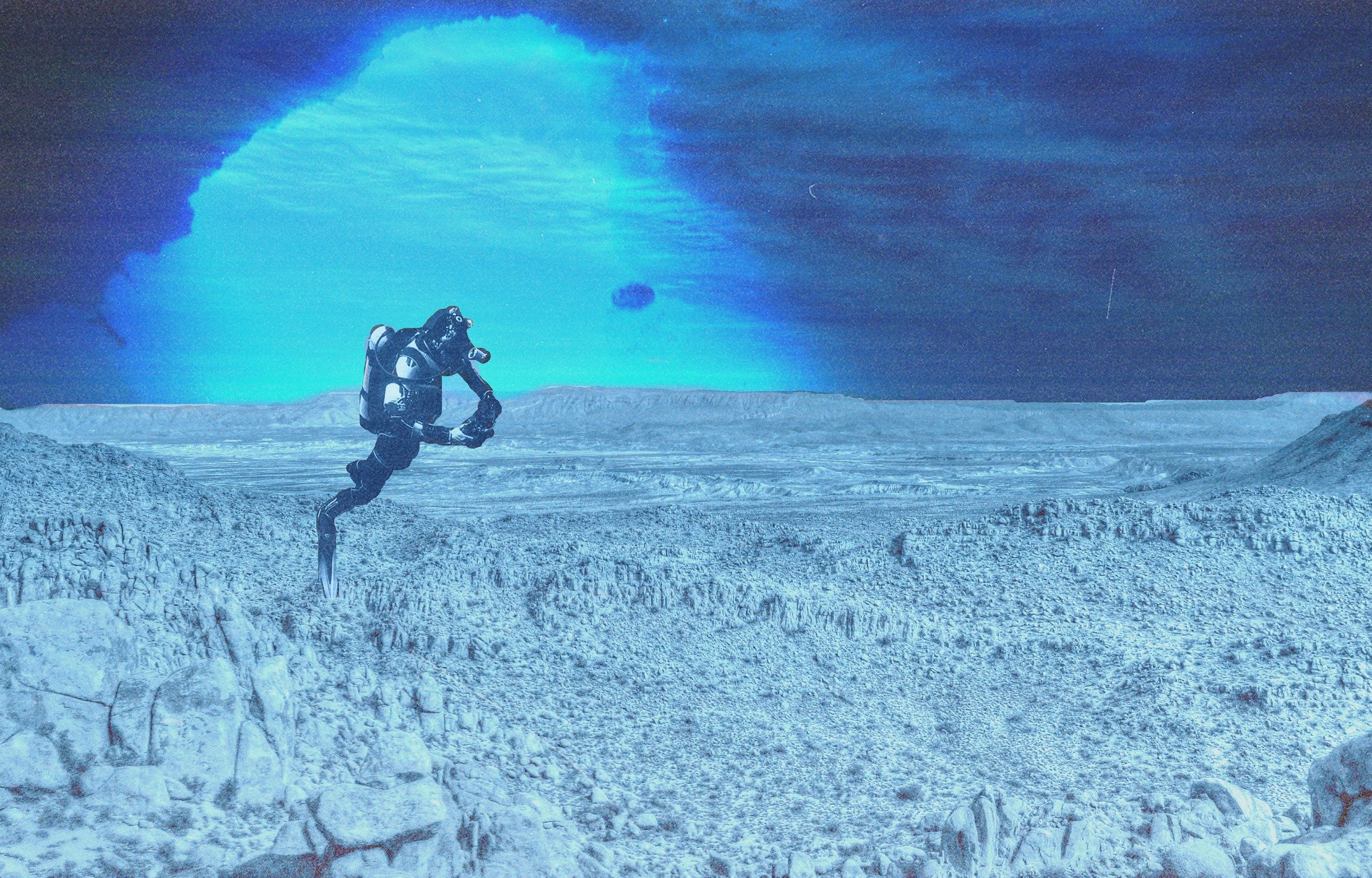The sea as infinite laboratory
There are educators who teach us to see the world always with a new pair of eyes. Cousteau was certainly among the best them.
Much of our thinking on the shape of the world and the universe derives from the way scientists and artists have approached these topics over time. Our fascination with the mysteries of the intergalactic universe can be traced back to the imagery of Carl Sagan’s Cosmos. Similarly, our vision of the sea as a source of wonder, a separate world within our own world, and one equally deserving of care and preservation, comes from the pioneering work of the explorer Jacques-Yves Cousteau (1910-1997).
Though his promising military career began at age 20, a car accident made Cousteau rethink his purpose, and he began to indulge in underwater exploration. Possessed of a unique temperament, Cousteau was led to innovate in the manufacture of instruments and tools for underwater exploration. He developed the famous SCUBA system in 1943 with the French engineer, Emilie Gagnan, and began exploring undersea mysteries such as the mythical lost continent Atlantis.

His first documentary, The Silent World, was awarded both the Cannes Palme d’Or and won an Oscar award for Best Documentary Feature in 1956. It was the first of a legacy of some 120 films and 50 books tracing the history of the planet from its oceans. And while these oceans cover some 70% of the planet, we still know scarcely anything of them.
Cousteau’s films presented not only some of the first underwater images of places like Antarctica or the Amazon, but they were also precursors of a documentary style that seems so common today. Researcher play participatory parts in the environment. Not merely scientists objectively describing their observations, Cousteau was an artist who taught others of what he’d witnessed. Cousteau’s vision of the sea is more recognizable and closer than we might recognize. While the widely known image of the Earth as a small blue marble in the middle of the universe is part of Carl Sagan’s wonderful legacy, Cousteau’s is to show us the all of the vitality that inhabits the depths of that bluish-black.
Producing documentaries wasn’t the only endeavor in Cousteau’s long voyage over the seas and stormy currents of the Earth. Over time, it became clear to Cousteau that he didn’t see himself as merely an entertainer, but as an activist committed to the oceans’ cause. His motivation, unlike that of some scientists, was based not in finding ways to monetarily benefit from exploration, but on sharing and producing a whole new awareness. And this was based on his astonishment at, and a deep knowledge of, the sea as a vital element for life on the entire planet, and not just for humanity.
In 1974, Cousteau founded the Cousteau Society, dedicated to the protection of the planet and the management of the legendary captain’s heritage. His impact on popular culture and on environmental causes made him a true rebel, and one who continued to perform underwater dives even through the age of 65. He defined his mission in these terms: “I’ve dedicated my entire life to discovering these treasures, guided by a single purpose: to share them with you and protect them for generations to come.”
Related Articles
Pictorial spiritism (a woman's drawings guided by a spirit)
There are numerous examples in the history of self-taught artists which suggest an interrogation of that which we take for granted within the universe of art. Such was the case with figures like
Astounding fairytale illustrations from Japan
Fairy tales tribal stories— are more than childish tales. Such fictions, the characters of which inhabit our earliest memories, aren’t just literary works with an aesthetic and pleasant purpose. They
A cinematic poem and an ode to water: its rhythms, shapes and textures
Here lies One Whose Name was writ in Water. - John Keats Without water the equation of life, at least life as we know it, would be impossible. A growing hypothesis holds that water, including the
Watch beauty unfold through science in this "ode to a flower" (video)
The study of the microscopic is one of the richest, most aesthetic methods of understanding the world. Lucky is the scientist who, upon seeing something beautiful, is able to see all of the tiny
To invent those we love or to see them as they are? Love in two of the movies' favorite scenes
So much has been said already, of “love” that it’s difficult to add anything, much less something new. It’s possible, though, perhaps because even if you try to pass through the sieve of all our
This app allows you to find and preserve ancient typographies
Most people, even those who are far removed from the world of design, are familiar with some type of typography and its ability to transform any text, help out dyslexics or stretch an eight page paper
The secrets of the mind-body connection
For decades medical research has recognized the existence of the placebo effect — in which the assumption that a medication will help produces actual physical improvements. In addition to this, a
Sharing and collaborating - natural movements of the creative being
We might sometimes think that artistic or creative activity is, in essence, individualistic. The Genesis of Judeo-Christian tradition portrays a God whose decision to create the world is as vehement
John Malkovich becomes David Lynch (and other characters)
John Malkovich and David Lynch are, respectively, the actor and film director who’ve implicitly or explicitly addressed the issues of identity and its porous barriers through numerous projects. Now
From hope to madness: advice from artists to artists
Advice from older artists to younger has been a tradition over the centuries. From Horace’s famous Ars Poetica through Rilke’s Letters to a Young Poet, artists across ages and generations have










